 |
| Martinique Oriole, De Rivera Blanche, Martinique, Dec 13, 2017 |
Just back from a round trip cruise from San Juan which made stops at a variety of islands in the Caribbean including St. Kitts, Antigua, Martinique, Barbados and Grenada. The original itinerary had stops in St Martin, St Croix and Dominica but the extensive hurricane damage to those islands resulted in a change of stops. This change unfortunately meant no chance to get the near endemic Plumbeous Warbler on Dominica.
 |
| Magnificent Frigatebird, Basseterre, St. Kitts, Dec 11, 2017 |
 |
| Red billed Tropicbird, offshore St Kitts, Dec 11, 2017 |
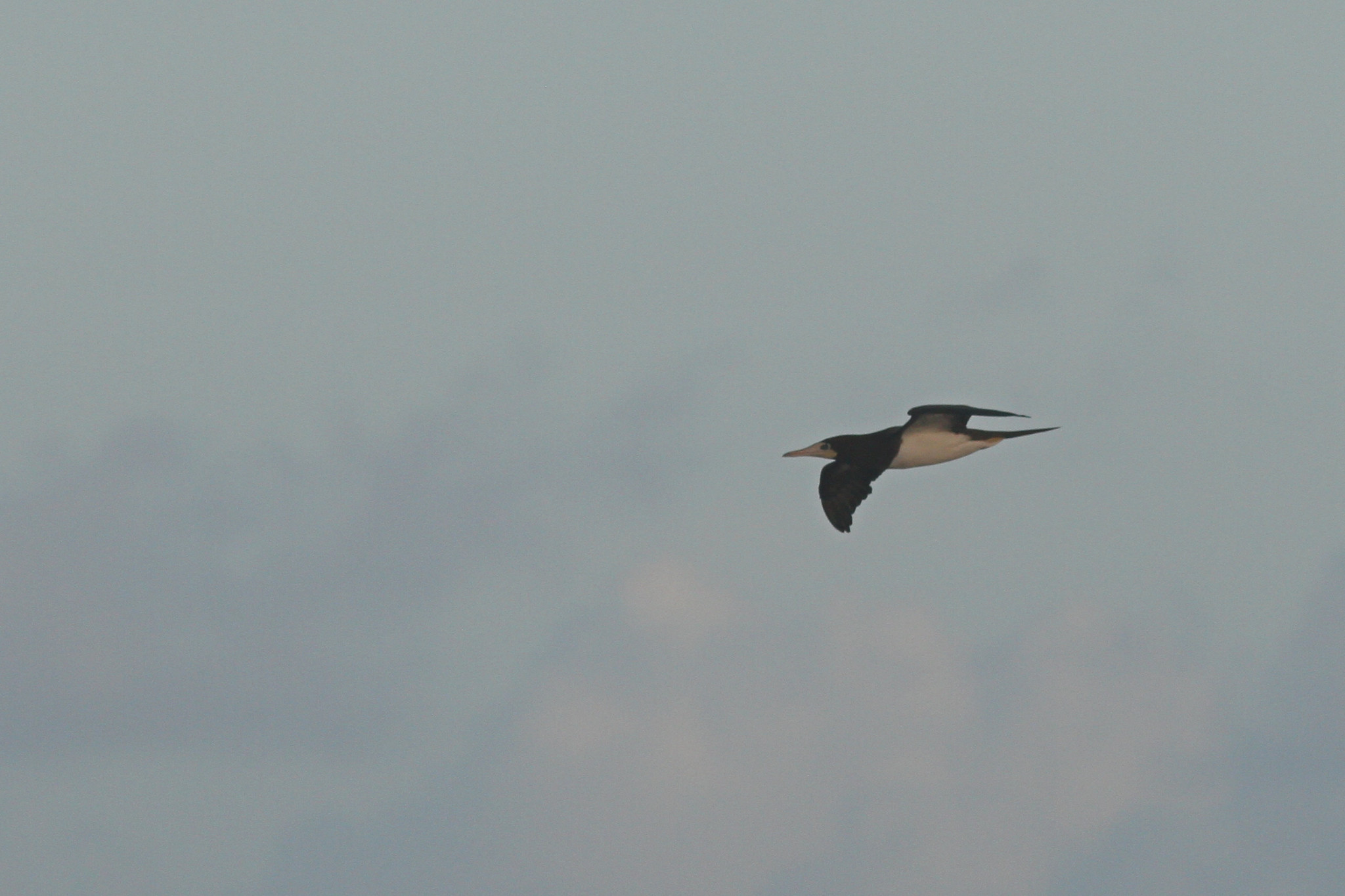 |
| Brown Booby, offshore St Kitts, Dec 11, 2017 |
Our first day was spent at St. Kitts where we were the sole participants on an around the island tour that included a short walk in the rainforest (which produced an unusual for the area Louisiana Waterthrush plus a couple Brown Tremblers) and some snorkeling time as well as some beach time. I was up for dawn before we docked and time spent sea watching turning up a couple Red billed Tropicbirds, Brown Boobies and a number of Magnificent Frigatebirds and Brown Pelicans. Once we docked we got off the boat right away and joined a prearranged tour for the remainder of the day. I added three new life birds including the previously mentioned Red billed Tropicbirds and Brown Tremblers as well as a Lesser Antillean Flycatcher (species #1308, 1309 and 1310). Additional photos at
St. Kitts album.
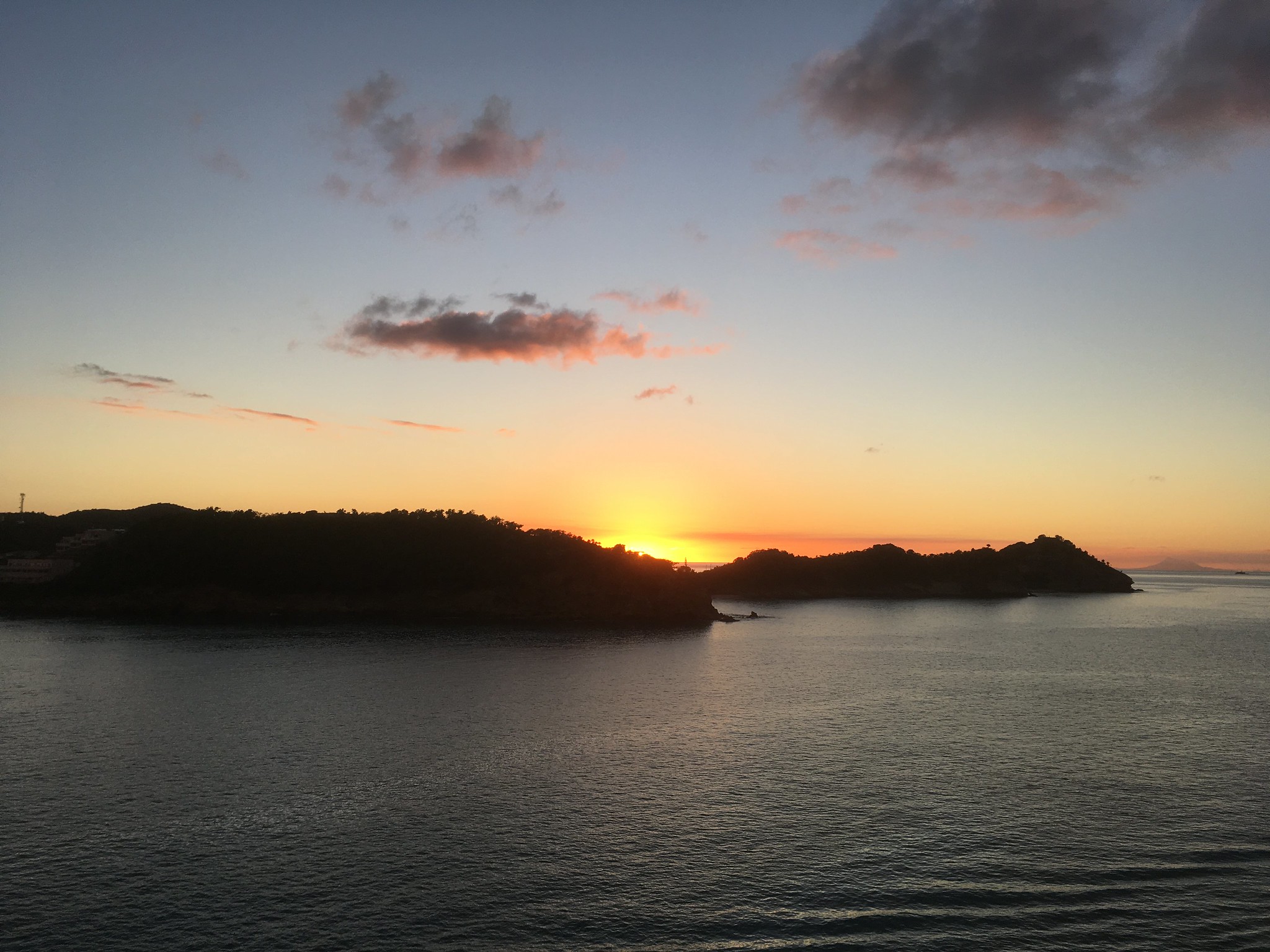 |
| Sunset, Antigua, Dec 12, 2017 |
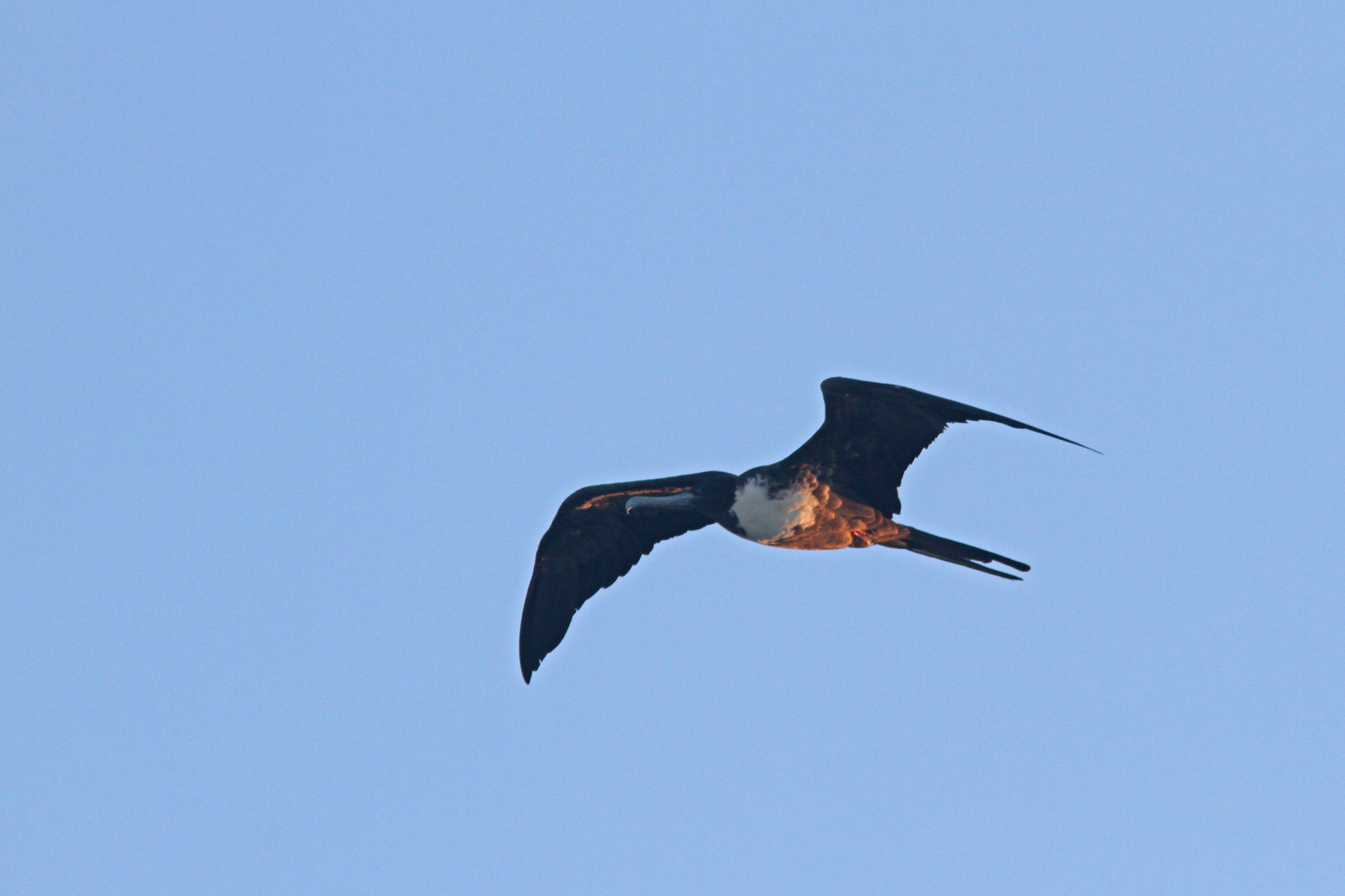 |
| Magnificent Frigatebird, St. Johns, Antigua, Dec 12, 2017 |
On our second day we landed on the island of Antigua where we headed to one of the many local beaches for a beach day. I tried my best to arrange a day trip to nearby Barbuda to track down the Barbuda Warbler but I couldn't get it to work out due to time constraints and the island still being off limits following the severe destruction from hurricane season. Despite having just a very limited area to check I still turned up some local birds as well as neotropical migrants spending the winter on the island. Life birds included a Red footed Booby flying past the ship before we docked for the day as well as my first Carib Grackles (species #1311 and 1312). Also sighted a few monkeys and several mongoose...a common theme on these islands and one that has been detrimental to the native wildlife. Additional photos from the day at the following link:
Antigua album
 |
| White breasted Thrasher, Reserve Naturelle de La Caravelle, Martinique, Dec 13, 2017 |
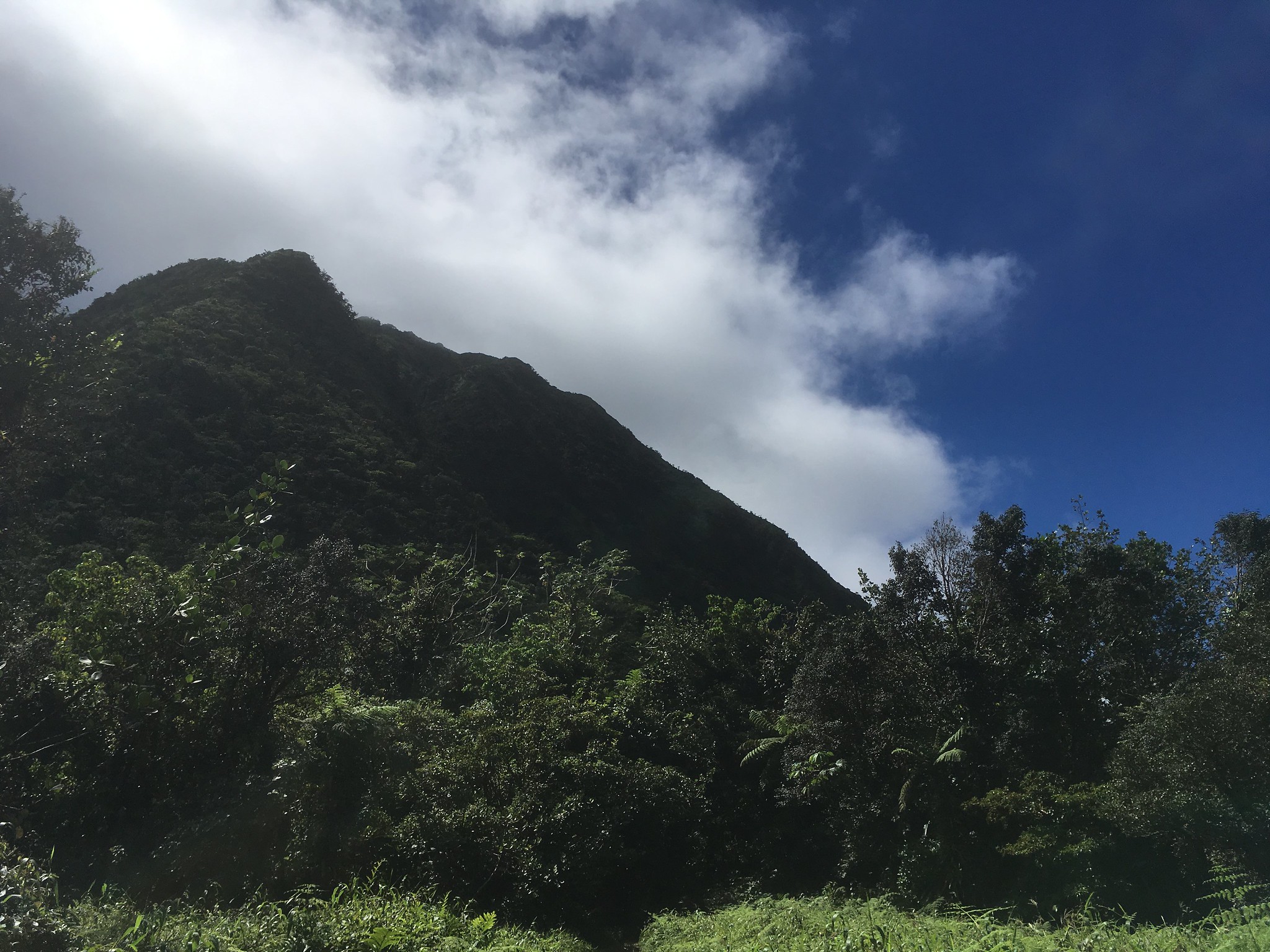 |
| Mountains at midday, Foret Pitons du Carbet, Martinique, Dec 13, 2017 |
 |
| Purple throated Carib, De Rivera Blanche, Martinique, Dec 13, 2017 |
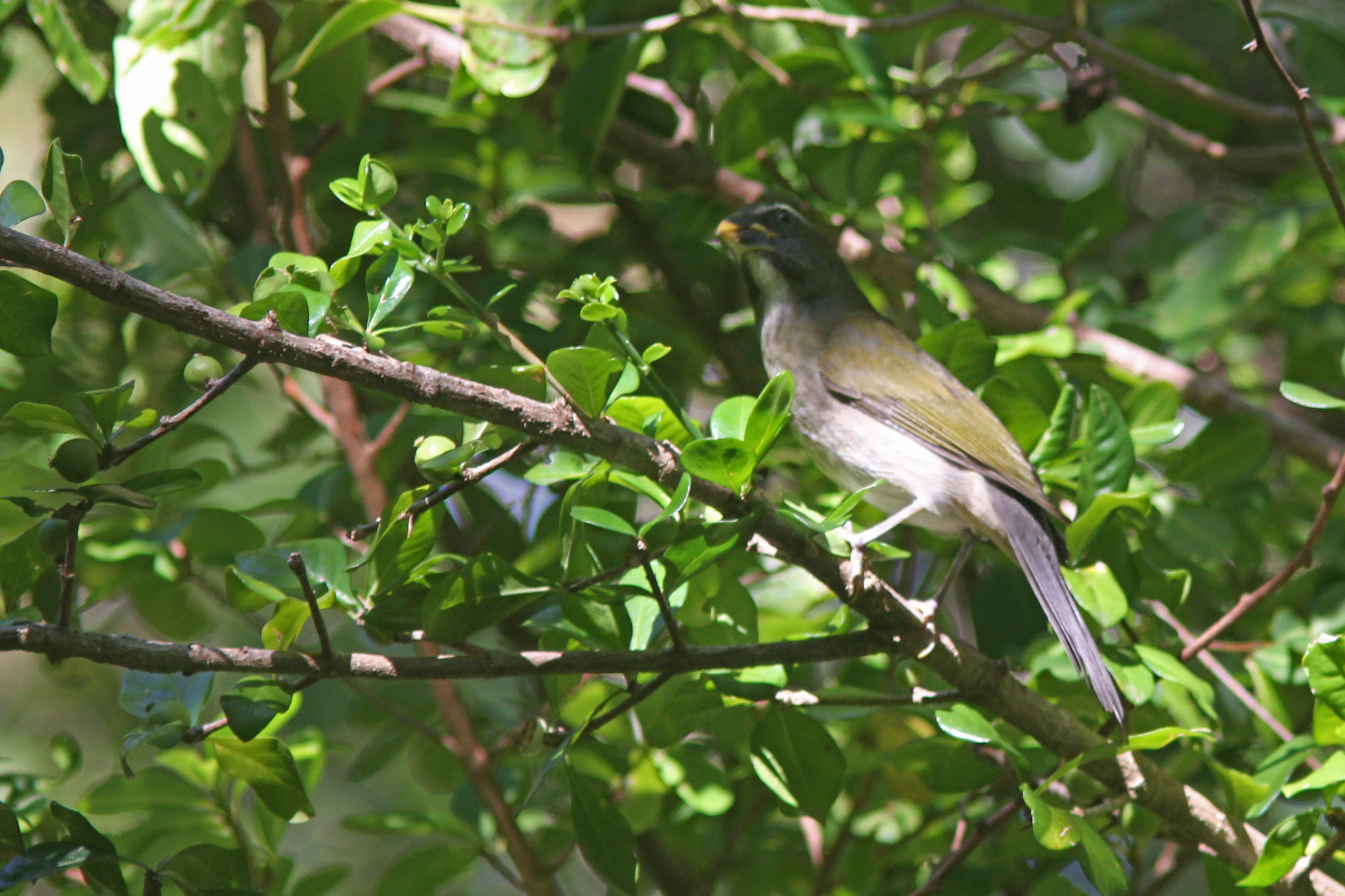 |
| Lesser Antillean Saltator, Reserve Naturelle de La Caravelle, Martinique, Dec 13, 2017 |
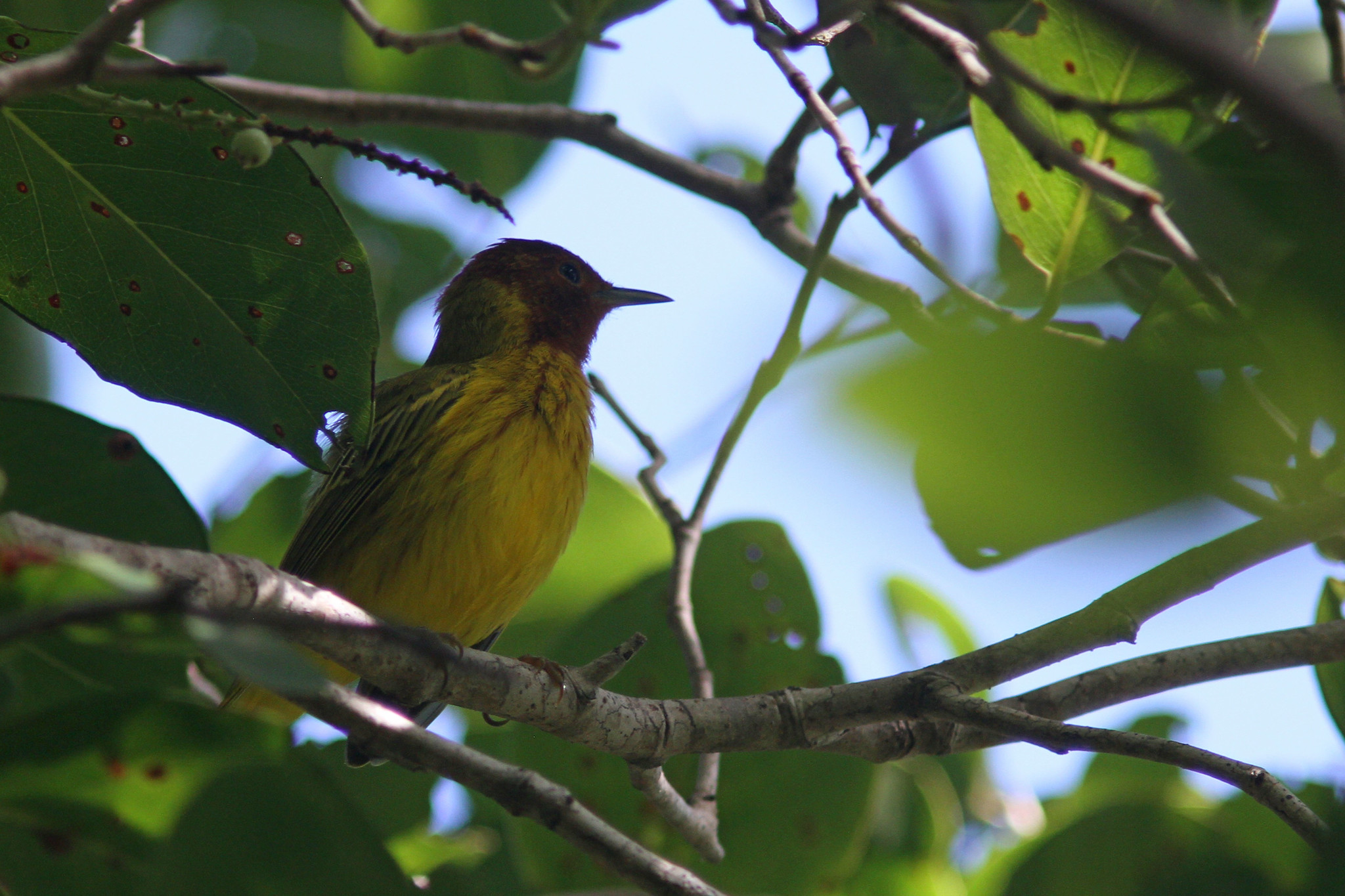 |
| Yellow Warbler (Martinique), Reserve Naturelle de La Caravelle, Martinique, Dec 13, 2017 |
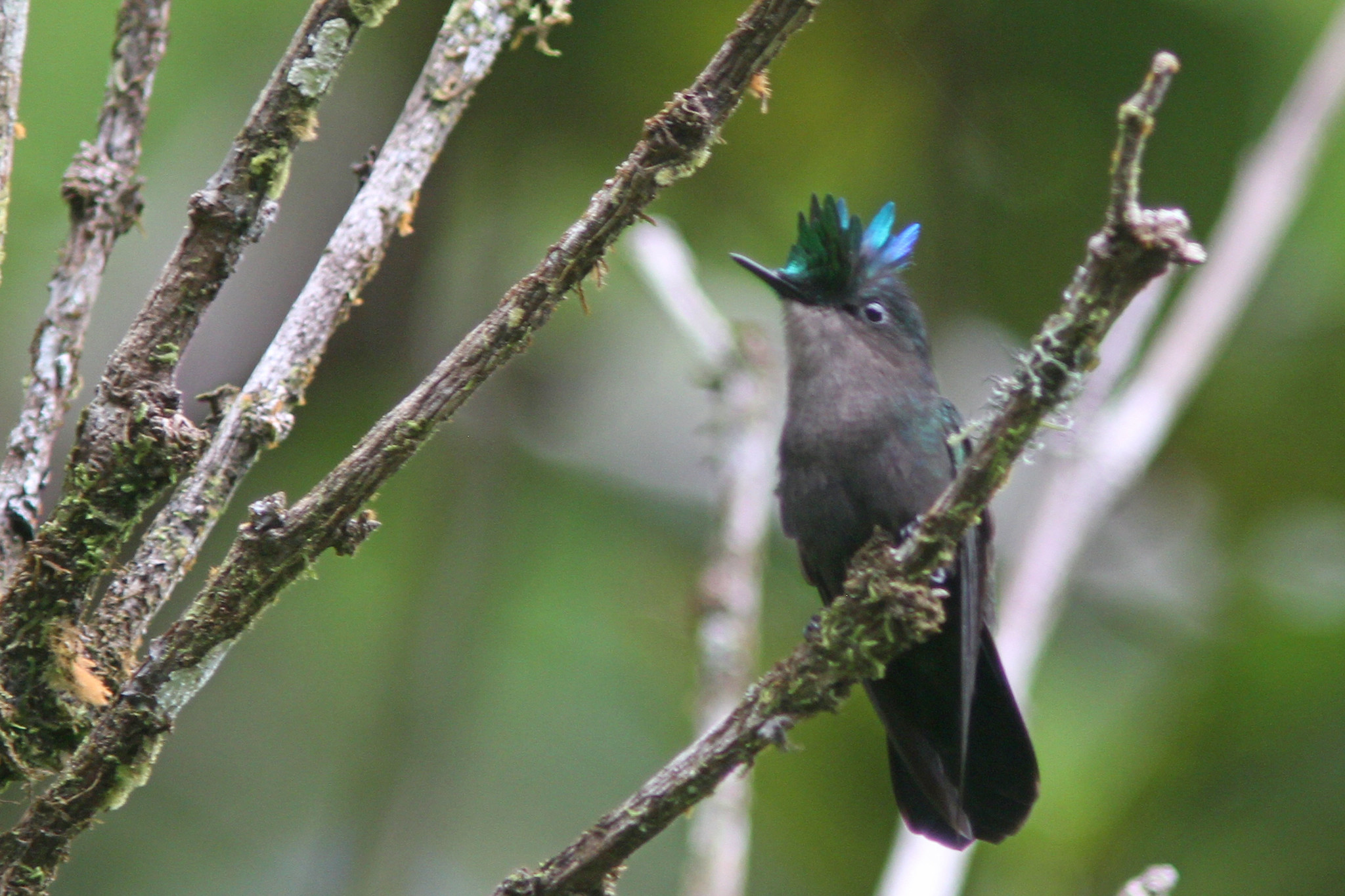 |
| Antillean crested Hummingbird, Foret Pitons du Carbet, Martinique, Dec 13, 2017 |
 |
| Scaly breasted Thrasher, Foret Pitons du Carbet, Martinique, Dec 13, 2017 |
The third day found us in Martinique where I hired a guide for the day to track down the endemic Martinique Oriole as well as a few other Lesser Antilles specialties. I was the third person off the ship and I immediately found the guide Beatriz Conde waiting for me. We headed out of capital of Fort de France over to the Caravelle peninsula to Reserve Naturelle de La Caravelle where we quickly found several of the critically endangered White breasted Thrasher (another life bird for me, #1313) The thrasher only occurs in this small area of Martinique and an equally small area of nearby St. Lucia. Other notables on the peninsula included two more lifers...Spectacled Thrush and Lesser Antillean Saltator (#1314 and 1315) as well as several of the unique subspecies of Yellow Warbler among others. After just under two hours on the peninsula we headed back west to the rainforest interior of the island arriving around midday where we enjoyed a lunch surrounded by a number of notable species including Purple throated Carib (#1316), Scaly breasted Thrasher (#1317) and my first looks at the endemic and endangered Martinique Oriole (#1318). Despite much effort a few more typically reliable sites we never had any luck finding Blue headed Hummingbird (which occurs just in Martinique and Dominica) or the Gray Trembler (which occurs only in Martinique and St. Lucia). The last stop of the day did produce four Lesser Antillean Swifts rapidly moving by providing the seventh life bird of the day and #1319 overall. Many additional photos from the day can be found at the following Flickr album link:
Martinique . If you are looking for a good guide to the island drop Beatriz a message at
biasconde@hotmail.com
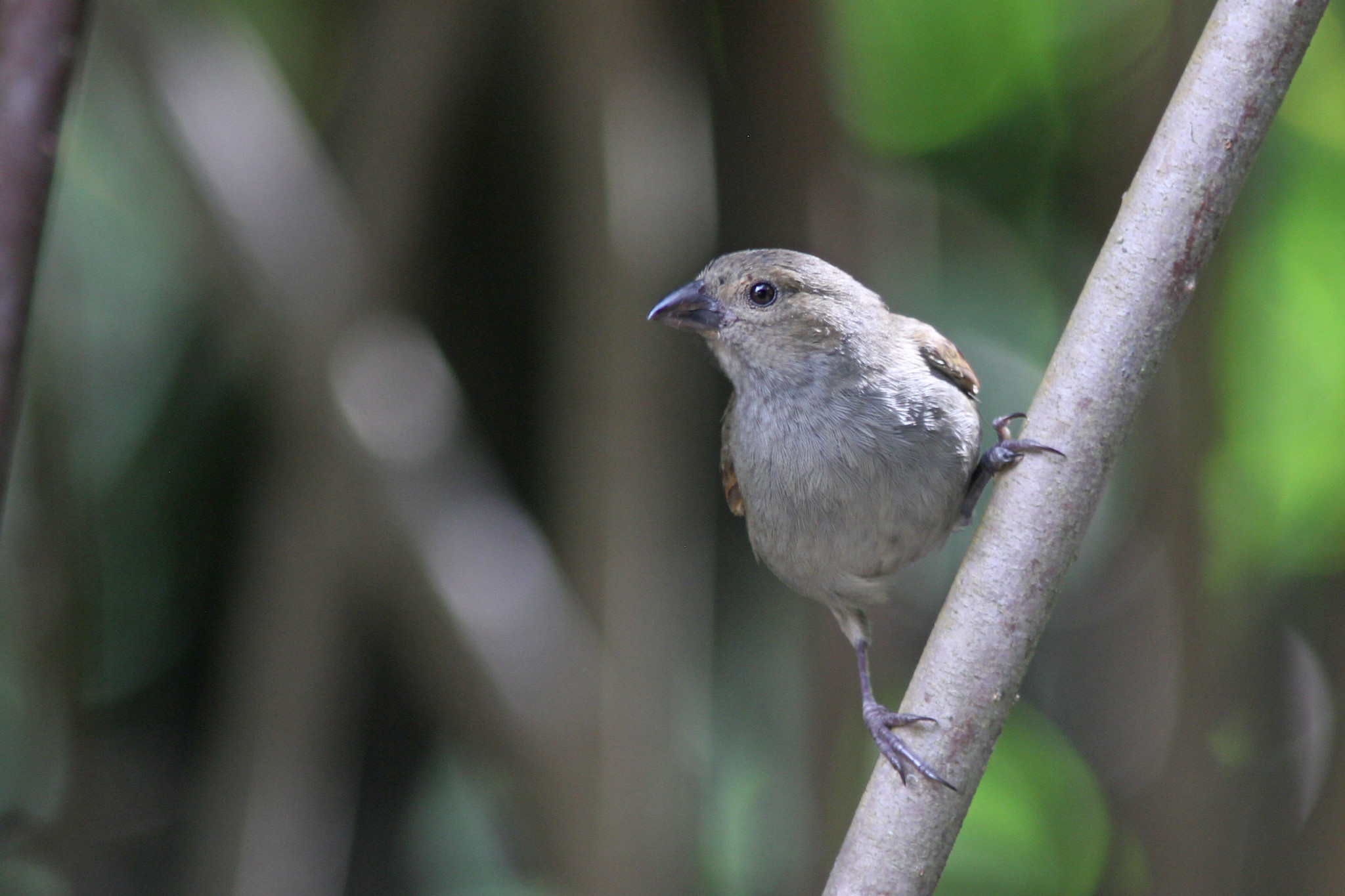 |
| Barbados Bullfinch, Grahme Hall Nature Sanctuary, Barbados, Dec 14, 2017 |
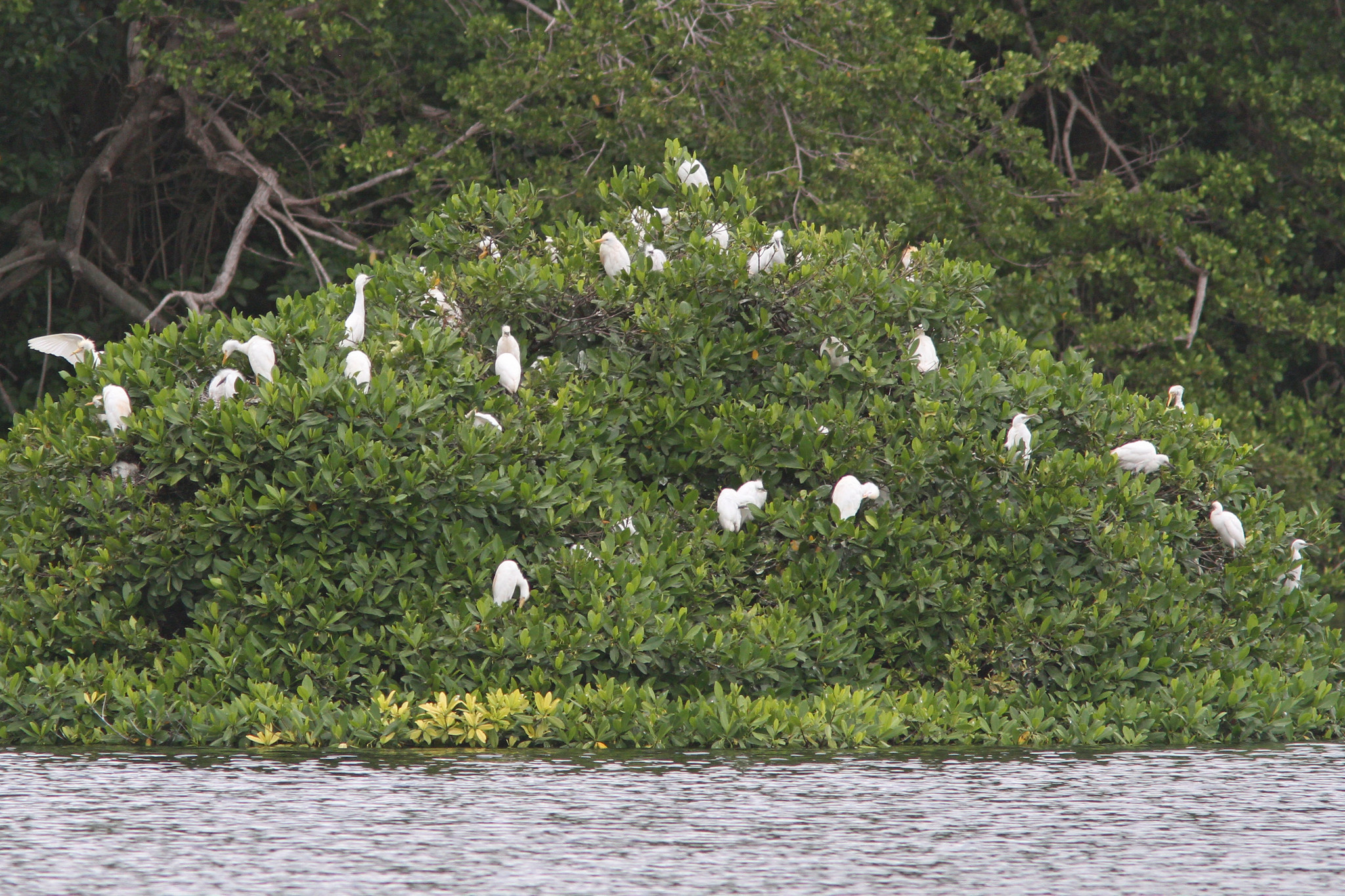 |
| Cattle Egrets. Little Egrets and Snowy Egrets, Grahme Hall Nature Sanctuary, Barbados, Dec 14, 2017 |
 |
| Bananaquit, Grahme Hall Nature Sanctuary, Barbados, Dec 14, 2017 |
 |
| Green Throated Carib, Grahme Hall Nature Sanctuary, Barbados, Dec 14, 2017 |
On Thursday we arrived at Barbados and I headed over to Grahme Hall Nature Sanctuary and spent a few hours there and tracked down my main targets including Little Egret, the endemic Barbados Bullfinch and the endangered local subspecies of Yellow Warbler. Unfortunately the nature center only had a limited amount of the area open so the views of the egrets were a bit distant (a real shame as the vast amount of the sanctuary was closed to the public as an ongoing dispute between the owner of the sanctuary and the Barbados government continues). The Little Egret is an old world species that made it to Barbados and has started to breed on the island, including at this location. The Barbados Bullfinch is the only endemic on the island and differs from the similar Lesser Antillean Bullfinch in a few ways with the biggest obvious difference being the males and females look the same. Both of these species were lifers (#1320 and 1321). I also eventually caught up with the endangered local subspecies of Yellow Warbler and managed to get a few photos of it. I was happy to get my target birds but I think with a guide I could have gotten some more good stuff but none of the guides I tried to book were available on the day I was there so I had to be content with just the stop at Grahme Hall. Link to all the photos from the day here:
Barbados
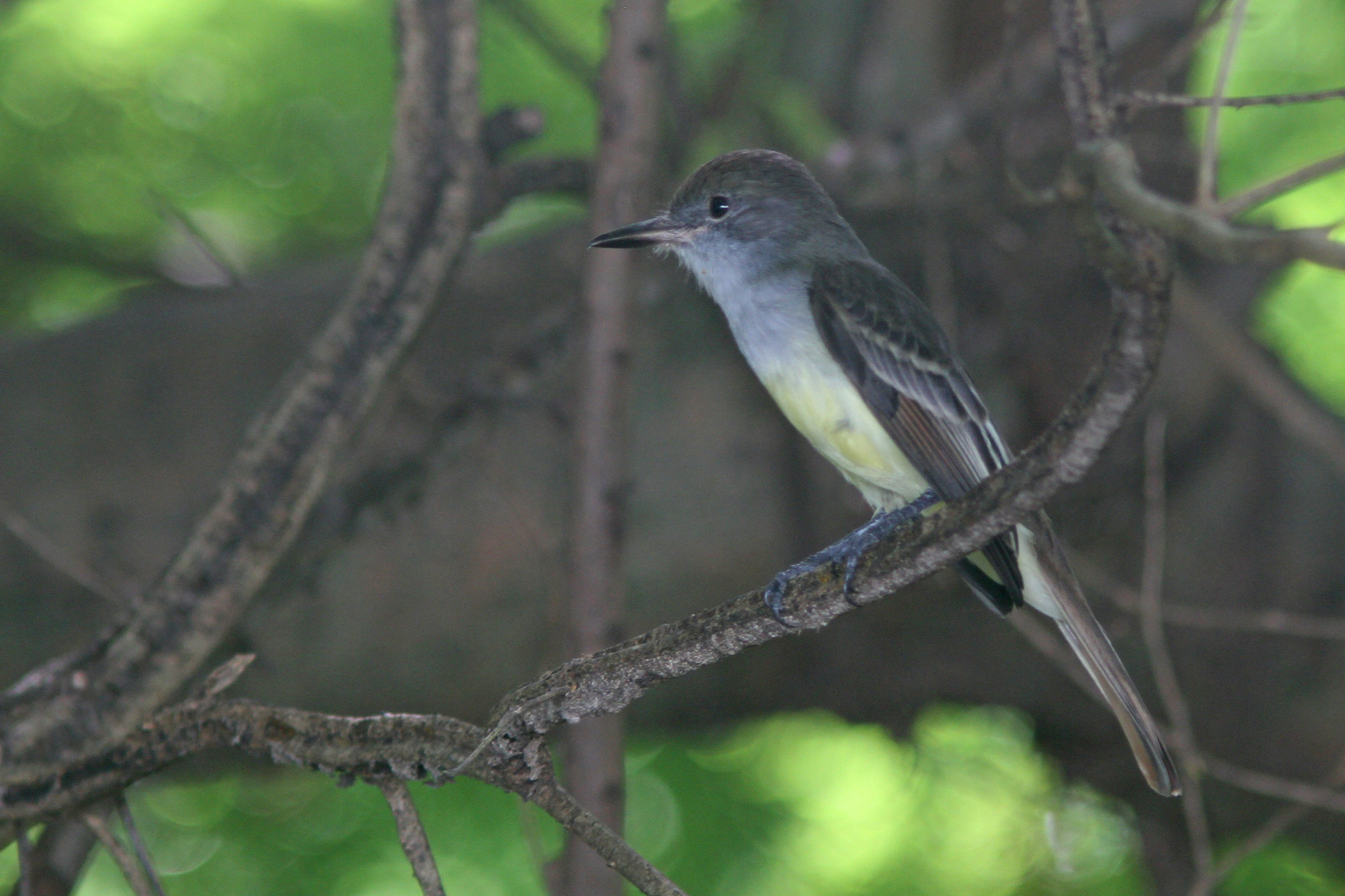 |
| Grenada Flycatcher, Mt Hartman NP, Grenada, Dec 15, 2017 |
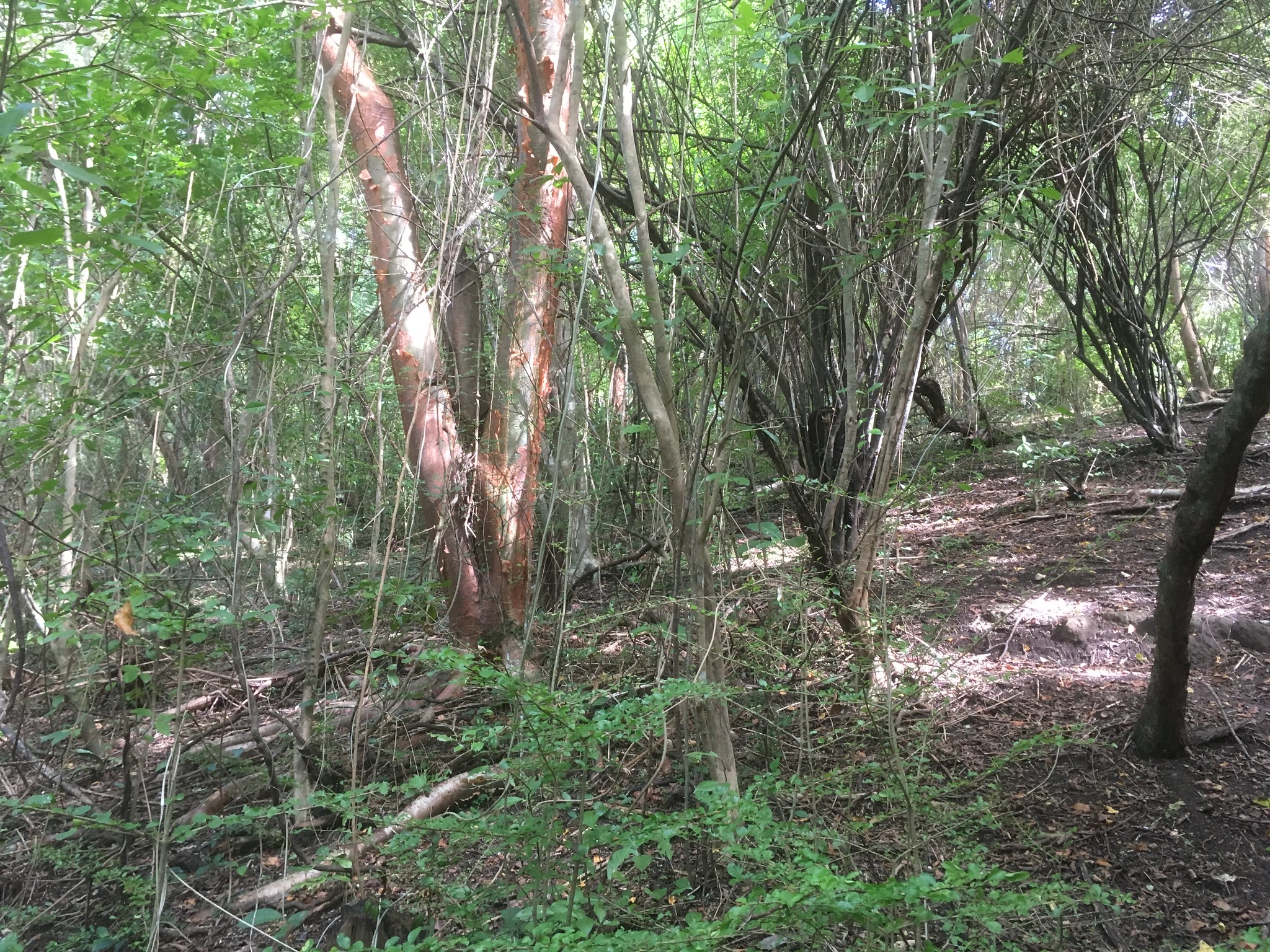 |
| Grenada Dove habitat, Mt Hartman NP, Grenada, Dec 15, 2017 |
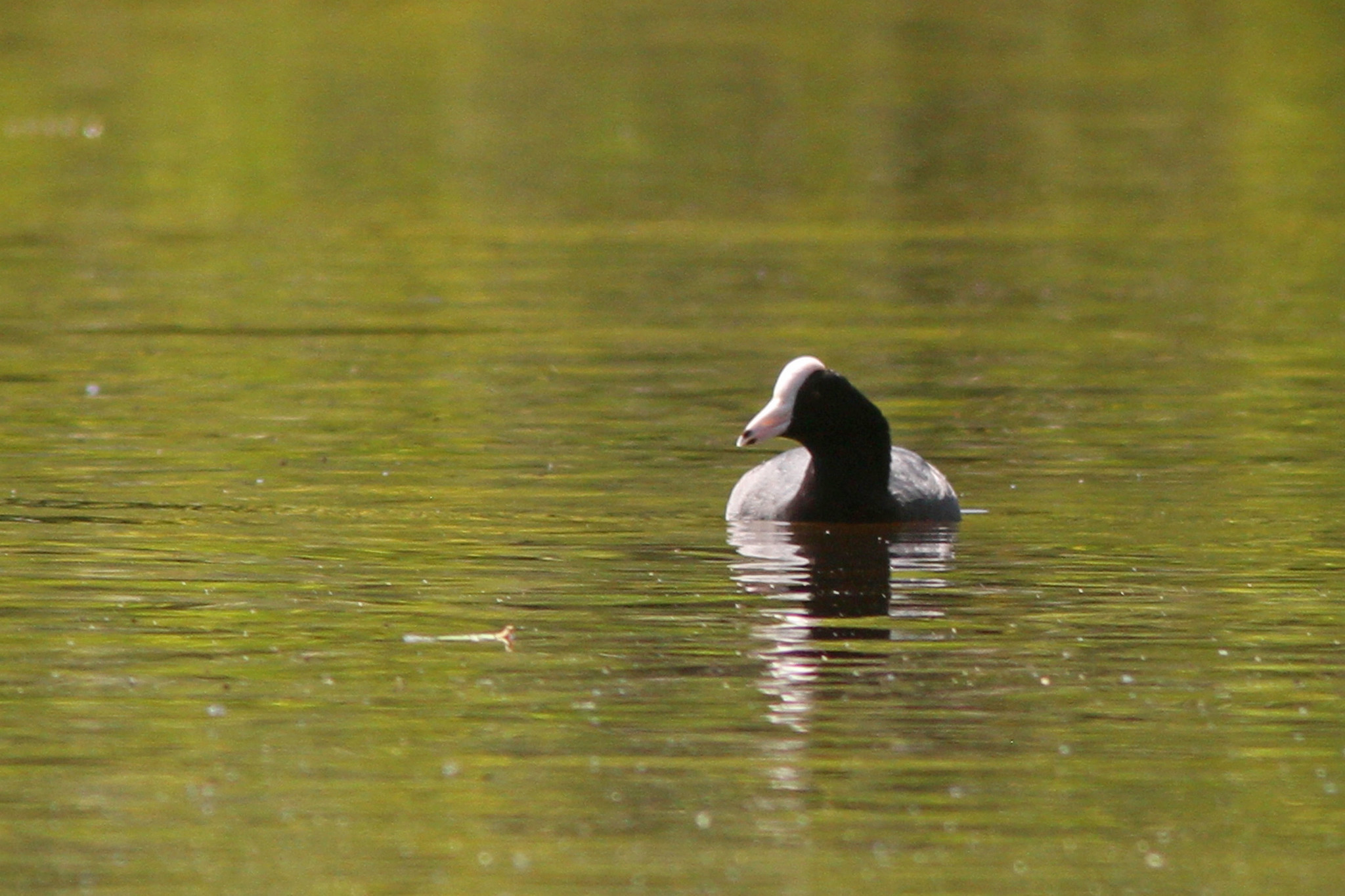 |
| American Coot (white shielded), La Sagesse Beach, Grenada, Dec 15, 2017 |
 |
| Bananaquit (Grenada), private residence, Grenada, Dec 15, 2017 |
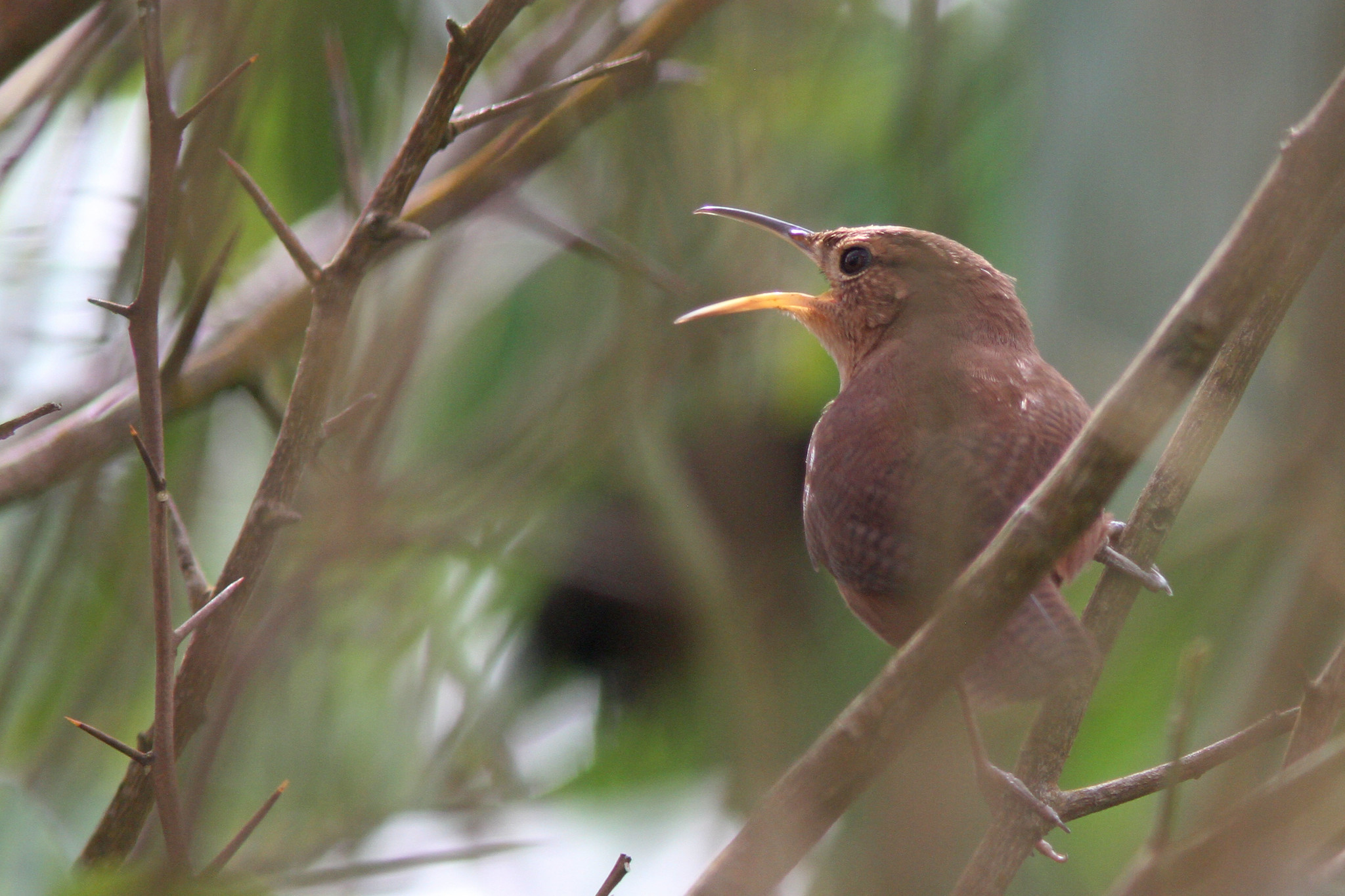 |
| House Wren (Grenada), private residence, Grenada, Dec 15, 2017 |
 |
| Lesser Antillean Tanager, Morne Gazo Forest Reserve, Grenada, Dec 15, 2017 |
 |
| La Sagesse Beach area, Grenada, Dec 15, 2017 |
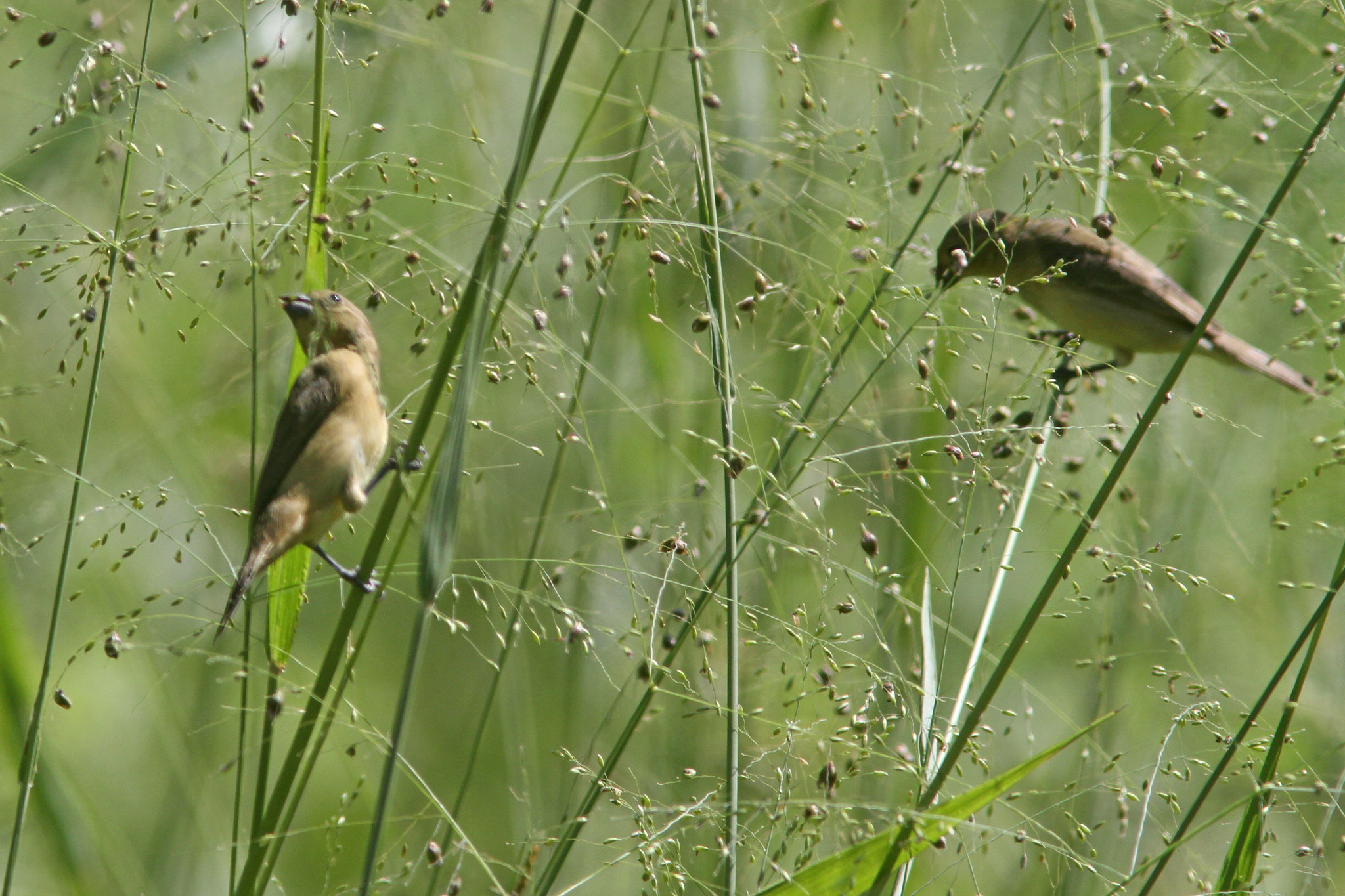 |
| Yellow bellied Seedeaters, road to La Sagesse Beach, Grenada, Dec 15, 2017 |
The final stop was to the island of Grenada where I hoped to track down the endemic and critically endangered Grenada Dove as well as a few other range limited species. After a bit of a snafu first thing in finding the guide I eventually caught up with Anthony Jeremiah (Jerry) and we were quickly headed off to Mount Hartman Dove Sanctuary where arrived and quite quickly had a Grenada Dove calling in among the dense, thorny cover. We eventually flushed two more doves but getting a good view was just not in the cards despite much effort. Quite a few other species around including Grenada Flycatcher, Yellow bellied Elaenia and my first look at the all black Bananaquits (present only on Grenada and St Vincent). We then continued a bit further east to a small wetland which produced a number of shorebird species including a tagged Ruddy Turnstone (I wasn't able to get a good enough look to read the tag). Our next stop was the area of La Sagesse Beach where we had some grassland species on the way to the beach including dozens of Yellow bellied Seedeaters. The mangroves near the beach turned up a few shorebirds plus a decent selection of waterfowl. The beach itself was quite nice and secluded with very few people around. We left the beach by early afternoon and headed up to Jerry's house to check out his yard and try for a few more target species. We immediately found a Rufous breasted Hermit coming into the feeders along with loads of Bananaquits, Lesser Antillean Bullfinch's, Antillean Crested Hummingbirds and brief looks at Lesser Antillean Tanagers. Before making one last attempt at getting better views of Grenada Dove we stopped briefly at a new forest reserve (Morne Gazo Forest Reserve) to try to get better looks at the tanagers and we succeeded quickly. Our return to the dove reserve produced just a single dove calling and that was it. A productive day with four life birds: Grenada Dove, Grenada Flycatcher, Rufous breasted Hermit and Lesser Antillean Tanager (#1322-1325). Link to all the photos from day on
Grenada. If you are going to Grenada I highly recommend contacting Anthony Jeremiah to be your guide, he can be contacted at tonydove200@yahoo.com.
 |
| Masked Boobies, Caribbean Sea, Dec 16, 2017 |
The last full day was spent at see and a bit of seawatching turned up a single Audubon's Shearwater and a couple of Masked Boobies that hung around the ship for almost an hour.
A total of 80 species for the trip with 18 of those life birds. I got most of my target birds but did miss a handful which I will hopefully pick up on future visits to the islands of the Lesser Antilles. Each island on the trip produced the following total species:
Saint Kitts: 23
Antigua: 27
Martinique: 30
Barbados: 23
Grenada: 45
All photos from the entire trip here:
Eastern Caribbean cruise


























No comments:
Post a Comment